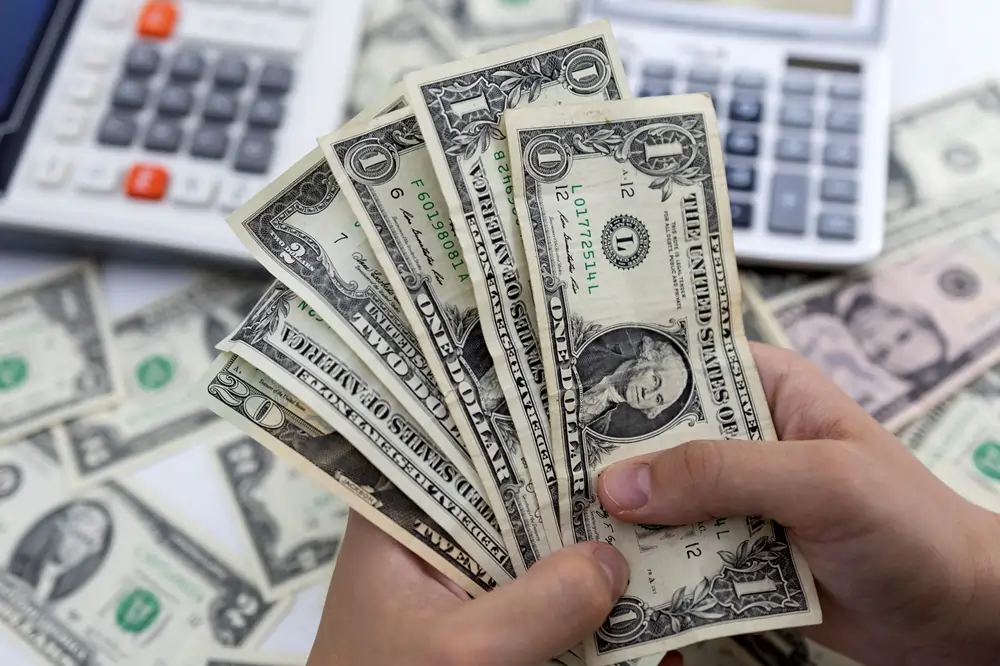
Dollar slides after US inflation meets expectations in April
By Hannah Lang and Joice Alves
NEW YORK/LONDON (Reuters) – The dollar was lower and on track for its first monthly decline in 2024 after data showed that U.S. inflation rose in line with expectations in April.
The personal consumption expenditures (PCE) price index increased 0.3% last month, the Commerce Department’s Bureau of Economic Analysis said on Friday, matching the unrevised gain in March. The data suggests the elevated pace of price increases could last longer than expected and offers little clarity on how soon the U.S. Federal Reserve will be able to cut interest rates.
“These numbers do not give any sense that the Fed is achieving its goal,” said Joseph Trevisani, senior analyst at FX Street. “It’s already stated what its goal is, so the markets are willing to give it some time … but that time I do not think is unlimited.”
The U.S. dollar index was last down 0.39% at 104.36.
The Fed has raised borrowing costs by 525 basis points since March 2022 in a bid to cool demand across the economy. Financial markets initially expected the first rate cut to come in March, which then got pushed back to June and now to September.
Official data showed on Thursday the U.S. economy grew at an annualized rate of 1.3% from January through March, down from the previous estimate of 1.6% after downward revisions to consumer spending.
Although inflation is “moving in the right direction,” said Kyle Chapman, FX markets analyst at Ballinger Group, “policymakers are definitely not out of the woods yet.”
“I would caution against overinterpreting a single month’s data,” he said.
EURO ZONE INFLATION
The euro edged up after data showed price pressures in the euro zone picked up faster than expected in May, complicating the outlook for the European Central Bank.
The euro was up 0.41% to $1.0876. French inflation data released earlier on Friday, and German and Spanish figures earlier this week, all came in slightly higher than expected.
The numbers have not altered the view in markets that the ECB will cut rates when it meets next week.
According to all 82 economists polled by Reuters, an ECB rate cut on June 6 appears certain, with a majority predicting further reductions in September and December.
Elsewhere, the yen strengthened, leaving the dollar down 0.15% at 156.58, but off this week’s four-week high as Japan’s finance minister repeated warnings about excessive currency volatility.
The Ministry of Finance released data on Friday confirming that Japanese authorities spent 9.79 trillion yen ($62.2 billion) intervening in the foreign exchange market to support the yen over the past month, in moves that kept the currency from testing new lows but are unlikely to reverse a longer-term decline.
Data on Friday showed core consumer inflation in Tokyo accelerated in May, but price growth excluding the effect of fuel eased, heightening uncertainty over the timing of the Bank of Japan’s next rate hike.
The offshore Chinese yuan was broadly steady versus the dollar at 7.2594 after an official factory survey showed China’s manufacturing activity unexpectedly fell in May.
(Reporting by Hannah Lang in New York and Joice Alves; additional reporting by Brigid Riley; Editing by Kirsten Donovan)


